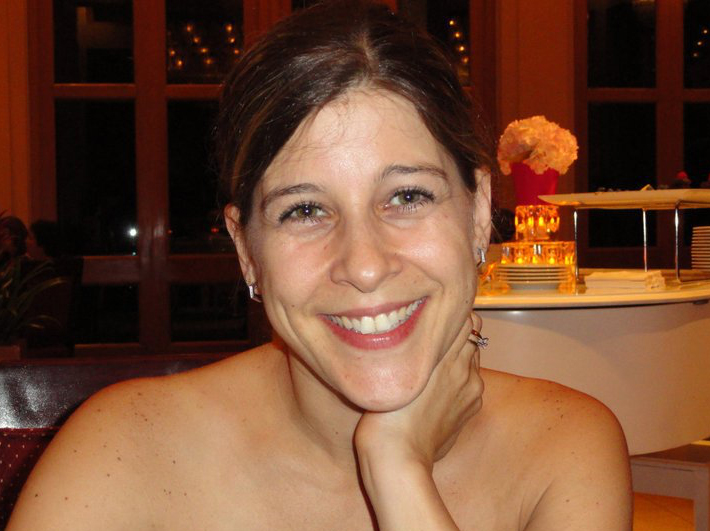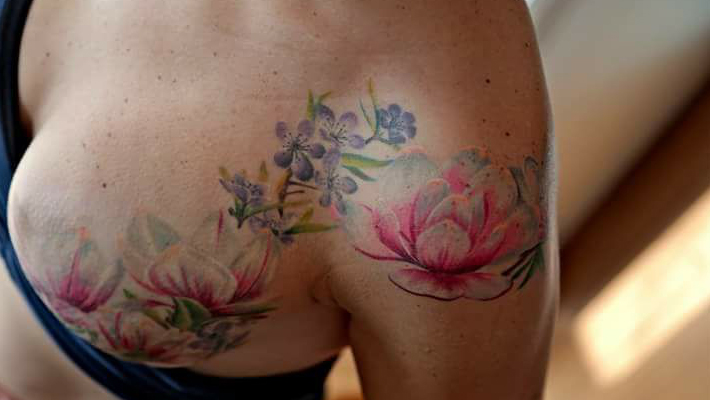
My story begins more than 9 years ago, when my father called me to say was having genetic testing. His cousin had just been diagnosed with ovarian cancer and had a known BRCA mutation. Many people I’ve spoken with have no idea that they can inherit this from their father, but I did.
It is vitally important to meet with a genetic counselor before undergoing any type of genetic testing. The goal of the counselor is to educate individuals about testing, management, prevention, resources and research. This is important, as the genetic testing process can all be very overwhelming.
After meeting with the genetic counselor and testing positive for a BRCA2 mutation, I found out my lifetime risk of developing breast cancer was 87%, and my risk of ovarian cancer was also significantly higher than the average woman.
Now, I ask you, if you knew your chance of winning the lotto was 87%, would you buy a ticket?
Or if the pilot on your flight told you that you had an 87% chance of crashing, would you board? That’s how I felt. No cancer, but stuck between a rock and a hard place. Finding out I had this mutated gene gave me no choice but to take control and deal cancer a pre-emptive strike! I was going to do my best to prevent any cancer, as scary as the idea of surgery might be.
In February 2009 at the age of 34, I underwent a preventative surgery to remove my ovariesl. The surgery was successful and my pathology reports came back with no signs of cancer.
I wish I could say that was the end of my story but breast cancer lurked in the background ready to rear its ugly head. So with that said, the second part of my journey began.
In April 2009 I had a PBM (prophylactic bilateral mastectomy) with reconstruction.
PBM is a fancy term for amputating both breasts (nipples and areolas included). Six weeks later, I began the process of rebuilding my new breasts or foobs (fake boobs) as they are called by many women who have this.
In October 2009, I had my final surgery to remove the tissue expanders and replace them with silicone implants. It was the first time I was actually getting something back. With the first two surgeries, I gave up my ovaries, Fallopian tubes, cervix, uterus, breasts and nipples, now I was getting back a part of myself that I had lost. The surgery was successful (or so I thought) and I was happy to put it all behind me.
Unfortunately, I had many complications and needed seven additional surgeries to fix all of the issues. My chest doesn’t look like I imagined it to be but it’s okay and I’m fine with that. I allowed myself to mourn the loss of my breasts, but now I am proud of my scars and feel quite comfortable in my skin. I am healthy, and I don’t live in fear of cancer anymore.
 When I found out about my BRCA mutation, no one was talking about it and I felt so alone so I decided to start the BRCA Sisterhood support group on Facebook. It provides emotional peer support and advice for women dealing with a hereditary mutation.
When I found out about my BRCA mutation, no one was talking about it and I felt so alone so I decided to start the BRCA Sisterhood support group on Facebook. It provides emotional peer support and advice for women dealing with a hereditary mutation.
BRCA Sisterhood is well-known and respected by geneticists and doctors throughout the world. I am proud to say that since I started it over 7 years ago, there are almost 10,000 members from all over the world and it is growing daily. Three years ago I decided that a support group was needed in Montreal so I created one and it has been well-received.
Many women that I have spoken with post-mastectomy feel ugly and scarred. Many do not feel sexy anymore. Society shows an unrealistic version of what beauty is. That is why I decided to be so public about getting a mastectomy tattoo. I chose to keep one breast scarred because I like the story it tells. I like seeing where my story began. Beauty comes in all forms and we need to embrace our imperfections, scars and all.



